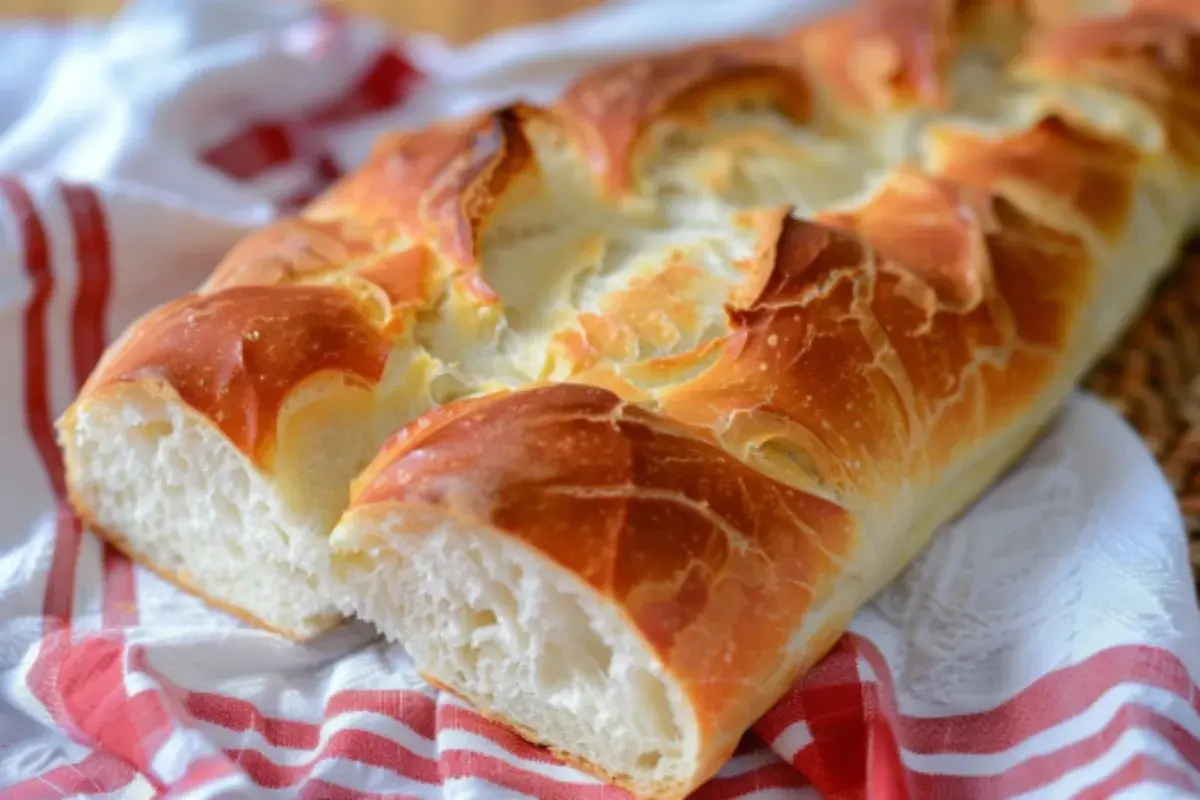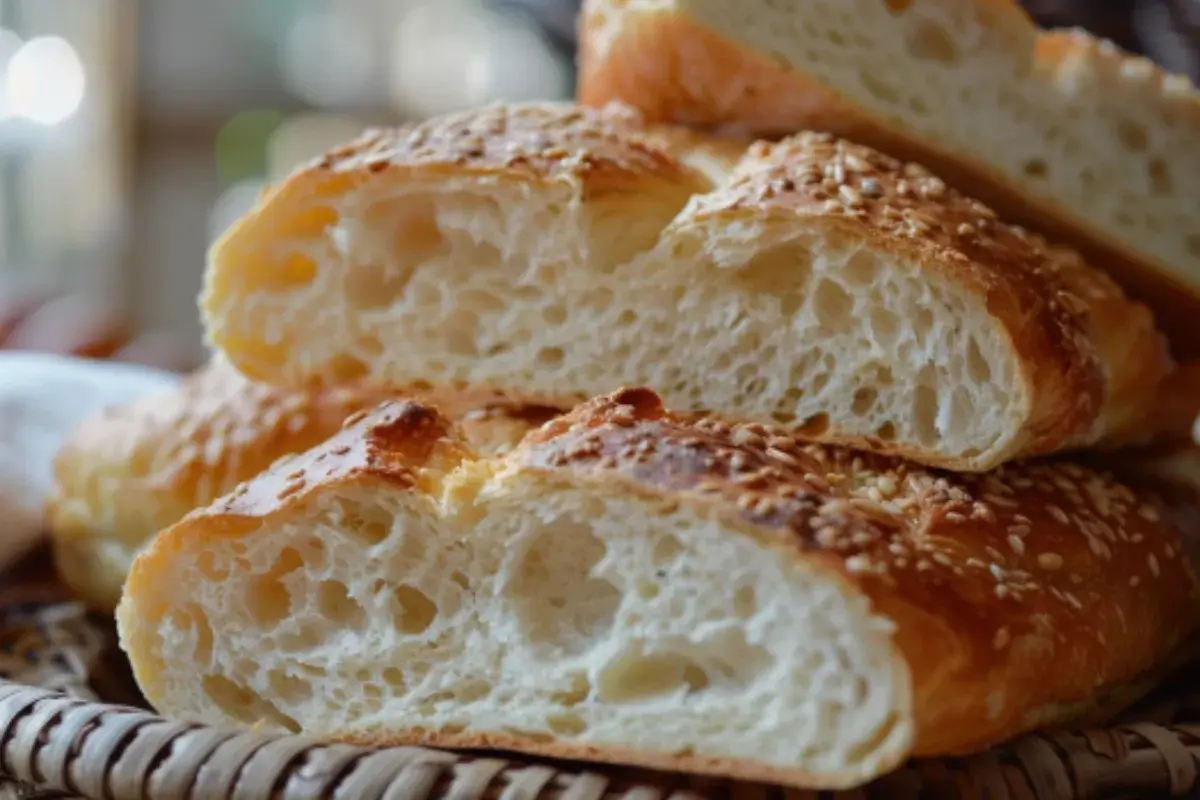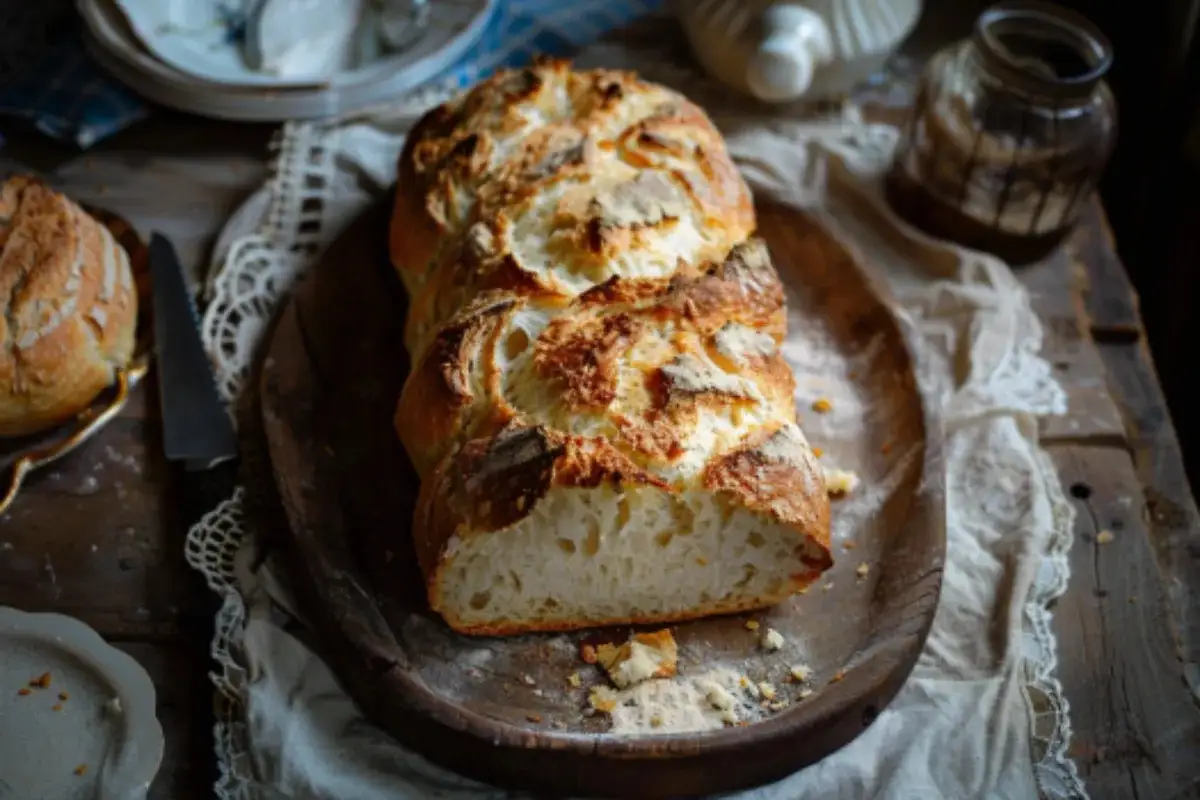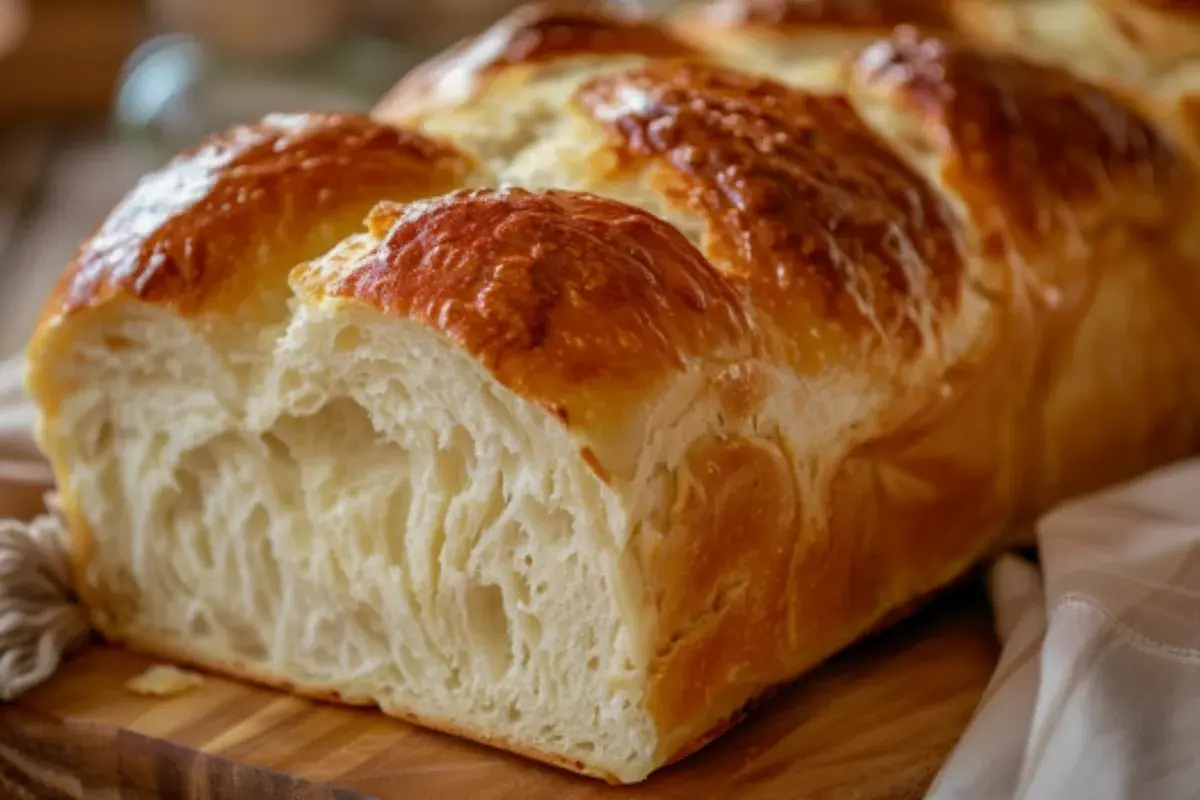Few cities in the world have a food culture as vibrant as New Orleans. With its blend of French, Spanish, African, and Creole influences, the city’s cuisine is diverse. Moreover, it is deeply rooted in tradition. Among the countless dishes that define New Orleans, one staple often flies under the radar. This staple remains the backbone of many iconic meals: French bread. Specifically, New Orleans French bread is integral to dishes like the po’boy sandwich. Additionally, it stands out on its own for its unique characteristics. So what makes this bread so special?
This article delves into the rich history of New Orleans French bread. Additionally, it examines the distinctive baking techniques involved. Furthermore, we will discuss the ongoing cultural significance of this bread. We will explore the craftsmanship of local bakeries. Moreover, we will look at its role in shaping New Orleans’ food identity. Finally, we will compare it to other regional breads. Additionally, we’ll touch on the various ways New Orleans French bread continues to thrive, despite modern challenges. Let’s begin by tracing the history of this iconic bread.
The French Influence on New Orleans Bread Culture

To understand why New Orleans French bread is so exceptional, we must first look at its origins. Like much of New Orleans’ food culture, the story of this bread begins with French immigrants. When French settlers arrived in the region during the 18th and 19th centuries, they brought with them their own culinary traditions, including the art of bread-making. However, it didn’t take long for these French immigrants to adapt their recipes to the unique conditions of New Orleans.
French bakers had to contend with the city’s hot, humid climate, which posed challenges for traditional French bread recipes. Over time, bakers adapted their methods. They created a loaf suited to New Orleans’ weather. Moreover, this loaf became its own unique variant of the traditional French baguette. Instead of being a simple replication, New Orleans bread developed distinct characteristics. It features an incredibly thin, crispy crust. Additionally, it has a soft, airy interior that is almost cloud-like.
Leidenheimer Bakery, founded in 1896, is one of the oldest and most famous bakeries in New Orleans that helped perfect this variation of French bread. Today, Leidenheimer is renowned for producing the bread used in countless po’ boy sandwiches across the city. Furthermore, it preserves a tradition that is more than a century old. The importance of French bread to New Orleans’ culinary identity cannot be understated. In fact, it forms the basis of many iconic dishes. These dishes are deeply embedded in the culture of the city.
How New Orleans French Bread Differs from Traditional French Baguettes
While New Orleans French bread has its roots in traditional French baking, it has evolved into a product that is quite distinct from the classic French baguette. Traditional French baguettes are known for their thick, chewy crust and dense interior. These characteristics are the result of centuries-old techniques, precise baking temperatures, and the specific flours used in France.
In contrast, New Orleans French bread is lighter, airier, and features a much thinner crust. This makes it ideal for dishes like po’ boys. In these dishes, the bread must support hearty fillings. However, it should not overshadow the flavors or become too tough to chew. Additionally, the texture of New Orleans French bread allows it to absorb sauces and juices from these fillings. Importantly, it does so without becoming soggy, which is crucial in a po’ boy sandwich.
- Crispness of the crust: One of the key elements of New Orleans French bread is the crispy, paper-thin crust. This differs from the thicker, crunchier crust of a traditional French baguette.
- Softness of the interior: Inside, the bread is fluffy and full of air pockets, making it light yet sturdy enough to hold a variety of fillings.
- Length and shape: New Orleans French bread tends to be longer and wider than traditional baguettes, allowing for larger sandwiches and more versatile uses in New Orleans cuisine.
This unique combination of textures sets New Orleans French bread apart from its French cousin. Furthermore, its ability to complement various dishes is notable. Its lightness is perfect for pairing with the rich flavors of New Orleans cuisine. Additionally, it works well with often spicy dishes such as gumbo, jambalaya, or red beans and rice.
The Essential Role of Ingredients in New Orleans French Bread
Though the technique is vital in making New Orleans French bread, the ingredients play an equally important role. Like most breads, the essential ingredients include flour, water, yeast, and sometimes a little sugar. However, the specific flour used in New Orleans is often softer and has a lower protein content than that typically found in French baguettes. This contributes to the light, airy texture of the bread.
- Flour: The quality of the flour is crucial in creating a bread that is soft and airy. In New Orleans, bakers often use a flour with a lower protein content, which results in a less chewy bread compared to French baguettes.
- Water: New Orleans’ water is also thought to contribute to the bread’s unique flavor and texture. The city’s soft water, low in minerals, interacts differently with the dough than harder water found in other regions.
- Humidity: An often-overlooked ingredient in New Orleans French bread is the city’s humidity. Bakers in New Orleans have learned to use the city’s natural climate to their advantage. The high humidity allows for a slower fermentation process, which produces a bread that is light, airy, and full of flavor.
It’s worth noting that recreating the exact flavor and texture of New Orleans French bread outside of the city can be difficult. Bakers often find that the combination of local ingredients and the city’s climate makes a significant difference in the final product. For those interested in trying their hand at New Orleans-style French bread at home, The Spruce Eats provides a great guide to getting started.
The Art of Baking New Orleans French Bread: A Labor of Love

Crafting the perfect loaf of New Orleans French bread is no easy task. While the ingredients are simple, the technique requires precision, patience, and skill. The process begins with mixing the dough, allowing it to ferment, and then shaping the loaves. But the real magic happens during the baking process.
Bakers in New Orleans often bake their bread at a slightly lower temperature than a traditional French baguette. This lower temperature, combined with the city’s humidity, results in a thin crust and a soft, light interior. The dough is carefully scored before baking, which allows the bread to expand evenly and develop its characteristic shape.
The baking process also plays a critical role in creating the bread’s unique texture. The steam inside the oven helps to create the crisp crust while ensuring that the interior remains light and fluffy. This balance is crucial to making a loaf that can stand up to hearty fillings while still maintaining its delicate, airy structure.
For those looking to experiment with baking New Orleans-style bread at home, it’s important to pay attention to details like oven temperature, humidity levels, and fermentation time. While it’s difficult to replicate the exact conditions of a New Orleans bakery, careful attention to these factors can help you get closer to the real thing.
Po’ Boys: The Perfect Companion to New Orleans French Bread
No discussion of New Orleans French bread would be complete without talking about the po’ boy. This classic sandwich is one of the most beloved dishes in New Orleans, and its success hinges on the quality of the bread. The po’ boy, which originated in the early 20th century, was created as an inexpensive, hearty meal for laborers. Over time, it became a culinary icon, with a variety of fillings ranging from fried shrimp to roast beef.
The key to a great po’ boy is the bread. New Orleans French bread provides the perfect vehicle for holding the sandwich’s fillings. The crispy crust adds texture, while the soft interior soaks up the flavors of the sandwich without becoming soggy. Whether filled with fried seafood, oysters, or even roast beef with gravy, the bread holds everything together while allowing the flavors of the fillings to shine.
Fried seafood po’ boy: One of the most popular versions of the po’ boy is filled with fried shrimp, oysters, or catfish. The lightness of the bread complements the crispy seafood perfectly.
Roast beef po’ boy: Another favorite is the roast beef po’ boy, often served “dressed” with lettuce, tomato, pickles, and mayonnaise. The bread soaks up the rich gravy without falling apart.
Innovative po’ boy variations: While the traditional po’ boy remains popular, New Orleans chefs have started experimenting with new fillings, such as grilled meats, fried chicken, and even vegetarian options. Despite the new variations, the one constant is always the French bread.
The beauty of the po’ boy is its versatility. While the fillings may change, the bread remains the foundation of the sandwich, providing the perfect balance of texture and flavor. This is why New Orleans French bread is essential to the city’s culinary identity it forms the basis of so many beloved dishes, both traditional and modern.
Why New Orleans French Bread is More Than Just a Side Dish
In New Orleans, bread isn’t just a side dish or an afterthought it’s often the star of the meal. While it’s commonly used for po’ boys, New Orlean French bread also plays a central role in other dishes, from bread pudding to the classic French toast known as pain perdu.
- Bread pudding: One of the most popular desserts in New Orleans, bread pudding is often made with leftover French bread. The bread’s light, airy texture makes it ideal for absorbing the custard mixture, resulting in a dessert that is rich, flavorful, and perfectly balanced between soft and crispy.
- Pain perdu: This classic dish, often called “lost bread,” is the New Orleans version of French toast. It’s made by soaking stale French bread in a mixture of eggs, milk, and sugar, then frying it until golden brown. The result is a dish that is crispy on the outside and soft on the inside, with the perfect amount of sweetness.
While bread is often seen as a supporting player in many cuisines, in New Orleans, it takes center stage. Whether used in savory or sweet dishes, French bread is an essential part of the city’s culinary landscape.
The Cultural Significance of New Orleans French Bread

New Orleans French bread is more than just a staple food it’s a cultural icon. The bread has been part of the city’s culinary heritage for more than a century. Moreover, it continues to play an important role in everyday life. Whether served as part of a po’ boy or used in a traditional dish like bread pudding, it remains significant. Additionally, it can be simply enjoyed on its own with butter. New Orlean French bread is a symbol of the city’s culinary identity.
The bread also holds a special place in the hearts of New Orleans residents. For many, it’s a reminder of family meals, neighborhood bakeries, and the traditions that have been passed down through generations. Even as New Orleans’ food culture evolves, French bread remains a constant, providing a link to the city’s past while continuing to inspire new culinary creations.
For locals and visitors alike, enjoying a loaf of New Orlean French bread is more than just eating it’s an experience. Whether you’re enjoying a freshly baked loaf from Leidenheimer Bakery or using the bread to create your own po’ boy at home, you’re partaking in a tradition that has shaped the city’s food culture for generations.
Comparisons to Other Regional Breads in the U.S.
New Orleans French bread may be iconic, but it’s not the only regional bread in the U.S. that has a deep cultural significance. From San Francisco’s sourdough to New York’s bagels, each region has its own unique bread that reflects its history and local ingredients.
- San Francisco sourdough: Known for its tangy flavor and chewy texture, San Francisco sourdough is one of the most famous regional breads in the U.S. Like New Orlean French bread, it has a thin, crispy crust, but the interior is much denser. The sourdough flavor comes from a natural fermentation process that is unique to the San Francisco climate.
- New York bagels: Another iconic regional bread, New York bagels are known for their dense, chewy texture and shiny crust. The secret to their texture lies in the water used in New York City, which is said to give the bagels their unique characteristics.
- Southern biscuits: While biscuits aren’t a type of bread in the traditional sense, they hold a similar place in Southern cuisine as New Orlean French bread does in Louisiana. Light, fluffy, and buttery, biscuits are often served alongside meals or used in dishes like biscuits and gravy.
Despite the differences between these regional breads, they all share one thing in common: they are products of their environment. Just as the humidity and local ingredients shape the texture and flavor of New Orleans French bread, so too do the local climates and ingredients influence the breads of San Francisco, New York, and the South.
Frequently Asked Questions
1. Why is New Orleans French bread different from regular French bread?
New Orlean French bread is lighter and airier than traditional French baguettes. This is due to the unique combination of ingredients and the city’s humid climate, which helps create the bread’s signature texture.
2. Can you recreate New Orleans French bread at home?
While it can be challenging to replicate the exact conditions of New Orlean, you can come close by using the right ingredients and paying attention to details like humidity and baking temperature. The Spruce Eats offers a guide on how to make a similar style of bread at home.
3. Where can I buy authentic New Orleans French bread?
If you’re in New Orlean, you can find French bread at local bakeries like Leidenheimer and Dong Phuong. Some bakeries also offer shipping to other parts of the U.S., allowing you to enjoy authentic New Orlean French bread no matter where you are.
Conclusion
New Orleans French bread is a culinary treasure that has stood the test of time. Its unique combination of a crispy crust and soft interior makes it special. Additionally, its role in iconic dishes like the po’ boy has made it a staple of New Orleans cuisine. Whether enjoyed on its own or in a sandwich, it has much to offer. Furthermore, it can be part of traditional dishes like bread pudding. This bread continues to be a source of pride for the city.
As the world around it changes, New Orleans French bread remains a constant. Ultimately, it provides a delicious connection to the city’s rich culinary history.

